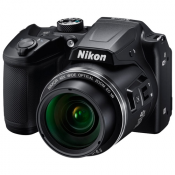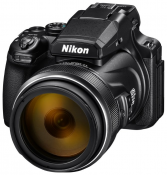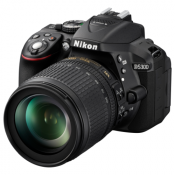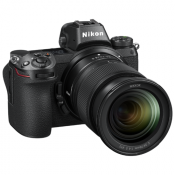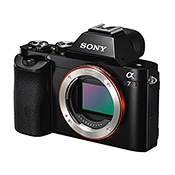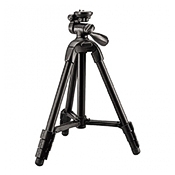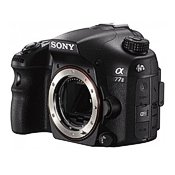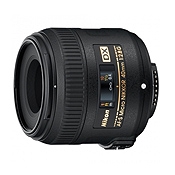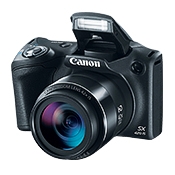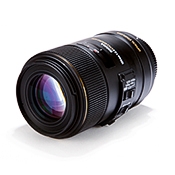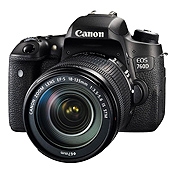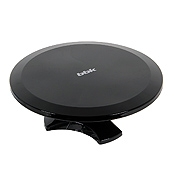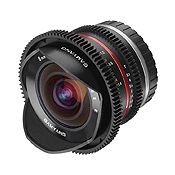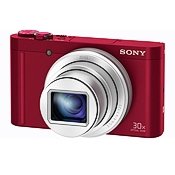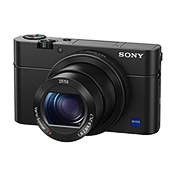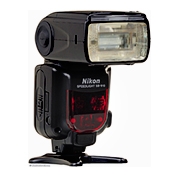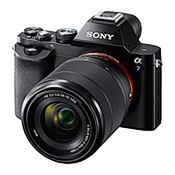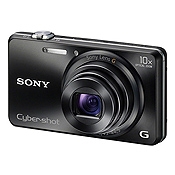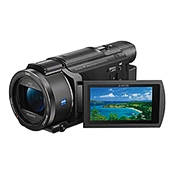Nikon D750 Body
Short review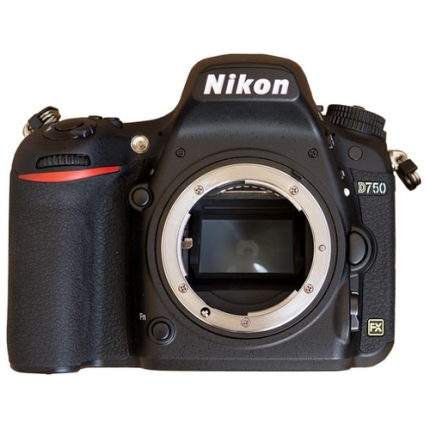
Buy Nikon D750 Body
Nikon D750 Body Specifications
Yandex.Market data
| Camera | |
| Camera type | mirror |
| Lens | |
| Interchangeable lens support | Nikon F mount |
| Lens included | no |
| Matrix | |
| Total Pixels | 24.93 M |
| Effective Pixels | 24.3 M |
| The size | Full frame (35.9 x 24 mm) |
| Crop factor | 1 |
| Maximum resolution | 6016 x 4016 |
| Matrix type | CMOS |
| Color depth | 42 bit |
| Sensitivity | 50 - 3200 ISO, Auto ISO |
| Extended ISO values | ISO100, ISO6400, ISO12800, ISO25600, ISO51200 |
| Matrix cleaning function | there is |
| Functionality | |
| White balance | automatic, manual, from the list, bracketing |
| Flash | built-in, up to 12 m, red-eye reduction, shoe, bracketing, i-TTL |
| Image Stabilizer (Still Image) | is absent |
| Shooting modes | |
| Shooting speed | 6.5 fps |
| Timer | there is |
| Timer running time | 2, 5, 10, 20 s |
| Aspect ratio (still image) | 3:2 |
| Viewfinder and LCD | |
| Viewfinder | mirrored (TTL) |
| Using the screen as a viewfinder | there is |
| Viewfinder field of view | 100% |
| LCD screen | 1,228,800 dots, 3.20 inches |
| LCD screen type | turning |
| Second screen | there is |
| Exposition | |
| Excerpt | 30 - 1/4000 s |
| X-Sync shutter speed | 1/250 s |
| Manual setting of shutter speed and aperture | there is |
| Automatic exposure processing | shutter priority, aperture priority |
| Exposure compensation | +/- 5 EV in 1/3-stop increments |
| Exposure metering | 3D color matrix, center-weighted, spot |
| Exposure Bracketing | there is |
| Focusing | |
| Autofocus type | phase |
| Focus points | 51, of which 15 are cross |
| The presence of a "screwdriver" | Yes |
| AF illuminator | there is |
| Manual focus | there is |
| Electronic rangefinder | there is |
| Autofocus correction | there is |
| Face Focus | there is |
| Memory and interfaces | |
| Memory card type | SD, SDHC, SDXC |
| Image formats | JPEG (3 levels compressed), RAW |
| RAW + JPEG recording mode | there is |
| Interfaces | USB 2.0, HDMI, mic-in, audio, Wi-Fi |
| Food | |
| Battery format | your own |
| Number of batteries | 1 |
| Battery capacity | 1230 photos |
| Battery pack | MB-D16 |
| Video and sound recording | |
| Video recording | there is |
| Video recording format | MOV |
| Video codecs | MPEG4 |
| Maximum video resolution | 1920x1080 |
| Maximum video frame rate | 60 frames / s |
| Maximum frame rate when shooting HD video | 50/60 fps @ 1280x720, 50/60 fps @ 1920x1080 |
| Video recording time | 30 minutes |
| Sound recording | there is |
| Other functions and features | |
| Body material | metal / plastic |
| Additional features | tripod mount, remote control, orientation sensor, computer control |
| Equipment | rubber eyecup, protective cap, rechargeable lithium-ion battery with protective cap, charger, eyepiece cap, USB cable, strap |
| Additional Information | HDMI Type C connector, Active D-Lighting Bracketing |
| Dimensions and weight | |
| The size | 141x113x78 mm, without lens |
| Weight | 750 g, without batteries; 840 g, with batteries, without lens |
Opinions from the Nikon D750 Body
Yandex.Market data
Advantages:
Quality, speed, precision.
Disadvantages:
A couple of times the video mode switch itself switched itself. Exposure doesn't always work out exactly. The viewfinder gum was lost almost immediately.
Comment:
An almost perfect camera. Fast, accurate, high quality picture. The case is surprisingly small and comfortable. In my big hand after the huge D3s that fit perfectly, there was almost no discomfort, especially with the battery grip, but without it the grip is excellent. Megapixels are no longer needed in fact.I shot a year before on D800 and never once did I need these 36MP in full, but I ate a lot of memory in the archive (50MB for each equal file). If we had made a 12MP equal, then the ideal camera would be. Personally, I sometimes need the speed of photo processing in reportage photography, when I need to send photos from the event to the customer as quickly as possible, and wait a long time while the conversion of 24MB is in progress. I don't take off in a jeep, although of course I have to if I need to send it urgently. Many people complain that there is no AF-ON button. I was also worried before buying, since I focus only on this button. I thought I would again have to relearn the classic one-button scheme. It turned out that the AE-L AF-L button can be reassigned to af-on. And if you really need exposure and focus lock, then you can assign this function to the fn or pv buttons, which is near the mount. About the inconvenience of switching iso. I reassigned the video recording button (which is near the shutter button) in the photo mode to change the ISO. All the same, for video, you need to constantly check the correctness of the settings, because they differ from the settings in the photo mode and I shoot video only in the video mode. It turns out that ISO can be changed with one hand without looking up from the viewfinder (after all, this parameter is also indicated in it). In general, apart from the buffer limitation, all other camera limitations can be bypassed one way or another. The settings are wide and it pleases. Perhaps over time there will be a firmware that removes the limitation from the buffer.
June 3, 2016, Moscow
Advantages:
Excellent autofocus. Most often there is a follower; 24 megapixels - neither more nor less; Auto white balance - copes in 90% of cases; Ma-a-a-atrix !!! After the crop, the ISO is simply outrageous! At 3200, you don't have to bother with the appearance of noise even in the shadows. Clean picture! DD - the raves stretch like rubber. The picture is kind of silky. I cannot say otherwise. The flip-up screen is the bomb! How I missed it on the previous camera! Well, the additional white pixel makes it possible to evaluate the picture in the bright sun. Video modes. Settings for video shooting are moved to a separate menu item. When switching from photo to video, you don't have to change the settings - the camera remembers the video settings separately! It's like you have two cameras set up differently. It is possible to change the aperture during shooting. You can display a live histogram and many other parameters on the screen, which is very buzzing. The video itself is very good. 60 fps at 1080p and the flat mode is very felt during processing. Ergonomics! As always Nikon is great in this regard! And then there is also a comfortable grip.
Disadvantages:
Perhaps 1/4000 shutter speed will be a disadvantage for someone. But do you often need 1/8000? I don’t. Wi-Fi could have done ok. It is most suitable for camera control. But this is nit-picking .. The buffer is too small ... Sometimes the camera is thinking. Probably flash drives need to be changed. But still the buffer could have been made more ... I couldn't think of anything else)))
Comment:
We shoot weddings. Before that, there were 2 D7000 for 3 years. I liked everything, everything was fine. Even with autofocus I found a common language. But, it was time to switch to FF. Because specificity requires pure high ISOs. Was between the choice - 600/610 or 800. The first differs from 7000 only in the matrix. The second has 36 megapixels. That's a lot for my needs. I would have had to make additional significant investments - optics, a computer, a new NAS ... And then Nikon rolled out the 750th! It was a gift for me! A real gift - I bought it for my birthday))) It has everything I need! For the photographer, the best will not be the best! Everything else is too expensive, heavier, requires more effort in filming or processing. In short, a perfect balance. The second camera shoots a video (or we shoot in 2 cameras) And here the difference from the 7000 is simply fantastic.I didn't own or shoot with Canon or Sony. Therefore, I can’t compare. I can only say that this device can solve most of the tasks facing the photographer and many tasks of the videographer. Very happy with the camera. Old Man 7000 is now in the wardrobe trunk. Just in case. Updating the review after 2 years. Yes, in fact, there is nothing to update! The camera makes me happy every time I take it in my hands. Great machine!
10 april 2017
Advantages:
- Speed and accuracy of phase detection autofocus - High working ISO values and acceptable level and nature of noise on them - Light, compact, comfortable grip, very convenient flip-up screen - Accurate BB metering and color (many "photoGraphs" are unhappy with this - you understand ugly) - High autonomy of 1000+ frames - Low requirements for optics (compared to D7100 and D810)
Disadvantages:
- Small buffer during continuous shooting - Frankly weak contrast AF (when shooting Live View) - Wildly slow and inconvenient Nikon converter (NX-D) - Numerous recall campaigns due to defects in production with limited service in the RF - unacceptable for professional work with camera
Comment:
The camera was purchased as an upgrade for the d7100. Just a couple of conclusions for those who do not like to read a lot: -If you need "beautiful jpeg" this is not for the D750 - the camera reproduces the color exactly, and in most cases this is not very beautiful. At best, you will need to create a camera profile to your taste, at worst, work in the editor offered by Nikon - Capture NX-D, which is unrealistic even on top-end computer configs. Third party converters do not understand camera settings and require serious enough skill to get beautiful color from a raw D750. -If you think that upgrading your cropped camera to 750 ki will make the photo better - you are mistaken, it will only simplify the process of obtaining technically high-quality images, even if you are a beginner.In my humble opinion, at the time of writing this review, the D750 has the best autofocus system in Nikon. excluding D5 and D850. At the same time, it provides all the advantages of an FF matrix in a lightweight and compact body. The D810 I recently bought, compared to the 750, is heavy and awkward to control. The camera is omnivorous to lenses - my Sigma Art (35 and 50) pixel-by-pixel resolve its matrix from an open aperture, and the ancient Nikkor AF DC 135/2 pleases with flexible soft and voluminous portraits. The flip-up screen allows you to shoot from ground level or overhead with outstretched arms without acrobatic stunts and poses, without losing the ability to accurately target the subject ... BUT contrast AF often makes it impossible to work out these frames faster and better. Nikon traditionally scored on Live View - this system works just as slowly and sometimes inaccurately as on the d7100, moreover, in the 810 - the same thing, despite the professional class of the camera + the screen tightly set in the body. In general, the D750 is a successful camera, a solid all-rounder for a wide range of photographic tasks, both for an advanced amateur and a rational pro. Someone will say - a compromise, I will say UNIVERSAL .. All of the above is my personal opinion, without claims to the "opinion of the last resort"
January 9, 2018, Voronezh
Advantages:
Tenacious autofocus. Reasonableness of custom functions. Slot for 2 memory cards. Flip-up screen. Video 60 fps.
Disadvantages:
The camera came under a revocable anti-glare campaign when shooting against a light source. But they fixed it under warranty. The screen on the top of the camera is too small.
Comment:
Moved from Canon EOS400D. Naturally, the enormous difference in the full frame is immediately apparent. But this is difficult to attribute to the merits - it goes without saying for this class of technology. I was pleased with the opportunity to shoot 60 fps video.- when processing a video, it becomes possible to effectively slow down the video. In general, a decent technique for both an advanced amateur and a pro.
June 26, 2015, Tula
Advantages:
1. The matrix, which is positioned by the manufacturer as a new one, is quite comparable in noise with the D4, at least up to ISO 25600. Even ISO 12800 can be considered working conditionally. Among 24-megapixel matrices, it is one of the best (and maybe the best). in detail and sharpness it is inferior to the D810 (including the AA filter available on the D750 does not add sharpness), but in low light and high ISO it wins in noise. 2. Relative compactness and light weight combined with a very comfortable grip. All controls are laid out in a very logical manner, and the camera takes almost no getting used to. 3. Autofocus perfectly clings to almost complete darkness, works very quickly, makes mistakes very rarely. For 500 shots, there was one mistake, perhaps his own fault. 4. Metering sensor 91000 pixels as in older models. 5. Screen with a variable angle of inclination. It's good that Nikon decided to take this step. Many people think that pivoting and tilting screens reduce structural reliability. At the same time, Sony puts tilting screens on almost all of its cameras, including full-frame ones. And Pentax has released a medium format tilting camera (645Z). 6. The video filming process is fully controlled, all the necessary parameters are configured. 7. One battery charge is really enough for more than 1000 shots. 8. A lot of settings and presets will allow you to customize the camera for yourself. 9. Wi-Fi. 10. Continuous shooting 6.5 frames / sec. This is certainly not the limit, but sufficient for most tasks. And better than some of the older models. 11. The price-quality ratio is one of the best.
Disadvantages:
1. Quiet mode could be quieter. If you don't want to draw attention to yourself, you won't be able to do it with d750. 2. There is no lever for the viewfinder shutter (as well as the shutter itself), but they are not so often needed. 3. There is no exposure 1/8000, you can live without it, although, of course, it's a pity. 4. Autofocus in LiveView mode is too slow, its sensitivity drops noticeably in low light. 5. Setting some functions automatically activates the LCD screen (for example when changing ISO), even if it could be dispensed with using the upper monochrome screen and this option cannot be disabled. It would seem that there is nothing wrong with this, but when the battery charge is running out, it can be significant. 6. There is no GPS receiver. It is possible to connect an external device (GP-1), but it is expensive and not very convenient to use. And it's not easy to buy it in Russia.
Comment:
The result is a versatile and high-end camera. Of course, professionals are unlikely to rush to sell their D4s and D810 and buy D750. The D750 is not the best camera for studio work, and it lacks the outstanding performance for reportage photography. But in low light conditions, thanks to a very high autofocus sensitivity (even the D4s does not have -3EV sensitivity), a low-noise matrix with a high resolution of 24 MP and an advanced metering system, it has no equal. Among professionals, the camera can be of interest to wedding photographers. It will also be of interest to advanced amateurs who have decided to switch to full frame for various reasons, as well as to owners of D600 and D610. In addition, the camera is also suitable for novice photographers who do not want to go through the stages of compact and entry-level DSLRs. There are automatic modes for them that work surprisingly well (including the "green" mode). I took this camera for travel for the following reasons: 1) Relative compactness and light weight. 2) Excellent low light performance. Shooting without a flash in a poorly lit room (for example, in a museum) is usually an overwhelming task for both advanced compacts and entry-level and intermediate-level DSLRs.The possibility of handheld night shooting during travel is also not superfluous - a tripod can ruin the walk, and during excursions its use is simply not possible. 3) Good video. 4) Dust and moisture protection. 5) Inclined screen. Allows you to shoot with a large number of people overhead. For this purpose, an inclined design is even more convenient than a rotary one. 6) The presence of a fairly powerful built-in graphic editor and Wi-Fi allows you to quickly process and send photos without a PC. P.S. I put it "excellent", despite the shortcomings. I consider them insignificant against the background of the merits, especially given the price.
November 23, 2014, Moscow
Advantages:
Price. Autofocus in almost complete darkness. 6fps continuous shooting is quite good for dynamic reports. 2 slots for SD memory cards. Programmable buttons. Separate menu and settings for video. Weight. Really up to 2000 shots on one battery charge. Dynamic range. Low noise sensor at high ISO. Swivel screen. Wi-Fi
Disadvantages:
- Another massive factory defect. I started to freeze and give a shutter error after 70,000 actuations. At 115,000 it was generally jammed. At the same time, I never shot in the cold, only in the warmth. - Very loud descent, which attracts attention in quiet places. - Strongly flapping mirror gives micro-smears, if the lens is without stabilizer, the "quiet" mode does not help much. - As with all Nikon products - gum peeling off the body after a year and a half of active use. - Low-pass filter on the matrix. Which, in fact, does not save from moire (caught several times on clothes), but at the same time lathers the picture a little. It would be better not to put it at all. - USB 2.0 - slow copying of files, and frequent pulling out of memory cards breaks contact with them. Therefore, I use a micro-SD card with an adapter, which I then simply change. - Wi-Fi works only with mobile android and iPhone devices, while draining the battery in the camera very much. And the maximum radius is 5-15 m (depending on the smartphone).
Comment:
I have been using it for more than 2 years. The shutter was changed free of charge, and with it the stretched rubber bands, even after the end of the warranty period. The repair period was 1.5 weeks together with the shipment, I think it's not bad. However, when replacing the shutter, the mileage counter is not reset. It remains only to believe that it was nevertheless changed to a new one. Wi-Fi comes in handy when shooting with a tripod. In this case, you can see the picture on the tablet in real time. You can also select a subject to focus on the tablet. Overall, I am very satisfied with the camera. For its price (I took it for 95,000) it is very decent. But still I want to take the second one without an anti-moir filter in order to achieve perfect detail. Unfortunately, from the FF Nikons, these are only the D800E, D810 and the new D850.
October 10, 2017, Kazan
Advantages:
THEIR MASS as never before! 1) matrix, matrix and again matrix !!!, working ISO 12800, at 8000-10000 everything is fine 2) focus speed and focus accuracy 3) new processor is even faster 4) rotary screen 5) BB on auto 6) video 7) grip 8) WI-FI 8) price
Disadvantages:
There are but SIGNIFICANT. 1) for some reason made an auxiliary screen smaller 2) a nickle of the joystick would be wider, my finger is thick;) 3) there is no protective glass on the screen yet (but I think it will be released soon), but I bought a branded film on the D750 from Polaroid. I have not noticed any more shortcomings yet.
Comment:
The BB stopped lying, the focusing is perfect, there are practically no blunders in complete darkness, the matrix does not make noise at all with straight hands up to ISO 10000, it is quite working even very much and 12800. You can feel the speed of work after the D700, D610, everything is very fast and it is noticeable right away. A comfortable grip was only on the D90 at one time, now it just hangs on the fingers very conveniently. The rotating screen is finally now above your head and near the ground, it's easier to always see the result of the future frame, especially when shooting video. Video is a separate delicacy, now there is a long-awaited 60 frames and the picture is very smooth, and indeed verydecent picture quality is somehow mesmerizing, warm. WI-FI with connection to any device, I especially liked to shoot through a smartphone, the screen is duplicated in real time with a smart and the pictures are instantly transferred to the same place in the same quality, you can immediately transfer something to your friends or customers, people are very happy. The battery shot 1384 frames, sooo not even bad. This camera pulls out any tasks assigned to it, that's what it planned and it will shoot exactly as you intended, some kind of built-in masterpiece in it. Night shooting is a fairy tale, no noise or lies from the BB Nikon guys tried very hard to consider this fantasy made of metal-plastic for those who grew up from D90, D7000, D7100. I do not advise the owners of the D600,610,700 to twist in their hands, since the cameras are almost the same, but you can get a little upset (like me) because there is something about which we more than once on the forums in our dreams wished that it would be in our 700 and 600, namely The most important thing is the speed and the matrix for noise and BB, well, for someone a screen with a turn. I don't see much sense in switching from 610, well, if only money is easy to get or you are a geek, from crops and 700 it is worth thinking about. I don’t know what I want from the camera, it has everything in it. Oh yes, I now want a Nikon 70-200mm f / 2.8G lens. Happy New Year and pictures that delight the soul!
December 31, 2014, St. Petersburg
Advantages:
Agile, tenacious focus in difficult conditions. Excellent ergonomics. Low noise at high ISO. And much more.
Disadvantages:
With a stretch, the lack of exposure 1/8000. Not fatal))
Comment:
Great camera, exactly what I need. I used to use D7000, I was thinking about switching to FF, but 610 is not much better than 7000, and 800 \ 810 was a little expensive for me, and I don't need 36 MP either. I managed to get it for 85,000, so the price at that time suited more than)). I read reviews here about problems when working in low temperatures and problems with autofocus in LiveView mode bundled with Sigma when shooting video. Immediately I put my Sigma AF 50mm f / 1.4 on, took the device to the balcony (temperature is about 0) and after half an hour I tried to shoot. Everything is fine !!! Autofocus works out, when photographing, even single ones, even a series, nothing jams. Apparently someone was unlucky, but everything is right for me (I knock on wood and spit over my shoulder))). An excellent camera, Nikon made me (and not only))) a great gift to NG.
January 11, 2015, Novomoskovsk
Advantages:
In general, in any topics about feedback with experience, you understand that most users of any technique are quite unassuming and undemanding, and cannot notice all the shortcomings. Regarding the D750, in any case, you need to understand that this is a camera designed for good sales by reducing the cost of quality relative to the D810. The most remarkable thing is, of course, the shutter, in 1/4000 there is no particular problem, but the fact that it breaks down quickly for many is of course the saddest thing, but how lucky 50/50 is. The shutter was changed according to the action, without waiting for a breakdown (according to the serial I got into the risk zone) for 40t frames, and after another 40 it passed. Plus freezes, on the latest firmware, they almost never occur, but still it happens rarely but aptly, I even had the last frame not recorded (which is not critical for me, I always make a series of 2-3 frames of a moment). The frame buffer of the camera is about 15 raw when using a sandisk card with 95MB / s recording, this is the maximum that this camera supports (although the real write speed is about 70 MB / s) it makes no sense to take the card faster, the speed will not be higher. Autofocus is not bad at all. There was D800 before, the difference is very noticeable on the better side. With sufficient light, it works quickly and in most cases hits it clearly. With a lack, he already thinks a little longer, smears a little more often, but in principle it is possible to work, at banquets an infrared illumination from a flash or other devices will help. The built-in backlight lamp helps at short distances and only in static conditions.
Disadvantages:
But I also have complaints with my camera (I do not know about the others), all that is described above is about the central point, the farther from the center the point is used, the more deviation I have in focusing accuracy, there is a constant backing roofing front , I do not remember. No, this is not a consequence of the fact that I just use non-cross points and they just cling worse, this constant deviation is small relative to the central one. Therefore, I switched to using mainly only the central one. The service center told me twice that they did not find complaints, everything is ok, despite the fact that I am in NPS. By the way, I did not notice this on the d800. But now it's cool to shoot on the central ¯ \ _ (ツ) _ / ¯ thanks Nikon. In terms of the overall speed of work, turning on, switching to viewing photos, there are also slight delays for me, I wanted a little quicker, but nothing fatal. This is noticeable with the active merging of frames on the card during shooting, on a cold one. According to the matrix after d800, this is a regression in most cases, there is not much difference in noise when converting to the same scale! However, in terms of sharpness, it is obvious that the d750 is inferior and noticeably, it even seemed that it became worse pixel by pixel, but here it is subjective. In principle, 750 is enough for weddings. In color, there is also no particular difference, maybe the auto bb began to hit a little better, but still there are jambs in certain situations with not very good light, like all most cameras, this can be corrected in an equal converter.
Comment:
On processing, on Nikon, when using chamber profiles in lightrum, I noticed that the yellow channel sometimes crawls out too much. In this range, the reflexes in nature are intensified and in yellow interiors there is also too much. Therefore, I sometimes use vsco profiles of type 400h, depending on the light and contrast of the preset and the frame itself, this allows closer shades on the skin to be obtained relative to Nikon's profiles where sharp transitions between skin tones can be enhanced. Again, if you have low-contrast presets, and soft light, then there will be no difference :) Camera profiles are well suited for landscapes, they give exactly the color dd wide. About mode switches like on amateur cameras - it's convenient. I hung up additional settings for the banquet, now I quickly switch. And someone suffered from this :) The rotary screen is also plus that it is, the design seems to be average in terms of reliability, but it did not seem to fall off over the season, did not loosen up. But there is also a cant. This is a contrast autofocus that you will use together with the screen flip, it is stupidly slow and inferior to those of competitors, only to shoot static frames. And for half an hour the focusing zone shifts, you can drink tea while you move it to the desired edge. I personally like how focus works on the screen in 5dm4, fire in general. I generally keep quiet about mirrorless cameras, there is a contrast one cut higher. The main advantage of the camera is the price, in its segment the camera is one of the best, but not ideal) I would like to continue in the form of D760 and D820 based on D5, since 750 and 810 from the D4s generation.
October 15, 2016, Surgut
Advantages:
Everything in the cell is fine. I shoot both photos and videos. Both functions are of the highest standard. 5d mark 3 is worse in video without a magic fanarik. By video-working iso 6400-8000, by photo in the region of 12. Eranchik is very convenient for video, simply irreplaceable. I like the video more than with 5d MK 3, including because of the sharpness. Wonderful autofocus, good shooting speed, cheap cards.
Disadvantages:
D 800 used for 3 years. He, according to the picture, including the equal, is more like to say plastic or something. But in the video, this one is many times cooler :)
Comment:
everything is spoiled only by the horse price for native lenses)
July 26, 2015, Odintsovsky district
